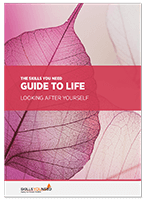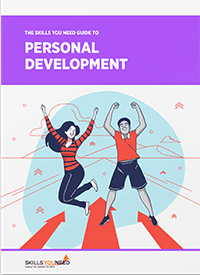Why CPR is a Skill that Everyone Needs
Lifelong LearningIn the UK, only 23% of people know how to administer cardio-pulmonary resuscitation (CPR). That means a massive 77% of people don’t know how to administer this easy to learn, life-saving treatment.
What’s even scarier is that this figure increases to a massive 93% amongst young people aged 16-24 years.
This means that if someone suffered a Sudden Cardiac Arrest (SCA), millions of people in the UK would not know how to react. When you consider the fact that there are 30,000 out of hospital SCAs each year, and that without immediate treatment 90-95% of SCA victims will die, this figure is even more shocking.
When you are aware of the facts, it becomes obvious that CPR is a skill that everyone should learn.
What is CPR?
CPR is an emergency procedure to be used when someone suffers from a SCA. It involves pressing up and down on a victim's chest and giving them a series of rescue breaths to help save their life.
A SCA is what happens when a victim's heart can’t pump blood around their body. This means that there is no oxygen reaching a person's brain and vital organs so, without the correct treatment, they can die within minutes.
By performing chest compressions you’re ensuring that the victim's heart is still pumping blood around their body, while rescue breaths ensure that their blood remains oxygenated.
What about using a defibrillator?
Performing CPR on a victim of SCA will help keep blood and oxygen pumping around their body. However, the best way to increase their chance of survival is to combine CPR with the use of a defibrillator.
Automated External Defibrillators (AEDs) are devices that give someone's heart a shock when it has gone into defibrillation (beating very rapidly, irregularly or quivering). AEDS are kept in many public places like airports, supermarkets, train stations and public attractions.
Anyone can use an AED, and it will never shock someone that doesn't need an electric shock. The machine will analyse someone's heart rhythm and then you use the visual prompts to guide you through each step.
When a person suffers from a SCA, every second counts. Every minute that a person is left without CPR and defibrillation, their chances of survival reduce by 7-10%. If the right treatment is given within the first 3-5 minutes of cardiac arrest, survival chances increase from 6% to 74%.
How Easy is CPR to Learn?
The majority of people are scared to administer CPR to someone suffering from a SCA because they are afraid they may cause further damage. With the right knowledge and training, people would feel more confident about administering CPR.
Considering how important CPR is, it’s actually surprisingly easy to learn.
Step 1:
Ensure the area you are in is safe and free from danger. You must call for help: if you are in a busy area ask a passer-by to call the emergency services; if you are in a remote location use your mobile to make the call. Use whatever resources you have available to request an ambulance and locate a defibrillator.
Step 2:
After you have called the emergency services, or if someone else is calling them for you, it’s time to begin CPR. This will help the heart pump blood to the brain and other vital organs.
Place the heel of your hand on the centre of the person's chest and place your other hand directly on top, interlacing the fingers. Straighten your arms and begin to press down around 2 inches, or a third of the chest diameter, keeping a steady rate for 30 compressions.
Do not worry about hurting the patient. They are clinically dead, so you can’t do any more damage with CPR!
Step 3:
After the 30 chest compressions, it’s time for rescue breaths. Tilt the victim's head back and lift the chin using two fingers. Pinch their nose, cover their mouth with your own and blow firmly. Provide two of these rescue breaths before resuming chest compressions. This will ensure that their blood is oxygenated when it’s pumping around the body.
Step 4:
Continue the cycle of delivering two rescue breaths for every 30 compressions until emergency help has arrived or someone is able to take over.
It’s even easier to use an AED; they all have either visual or verbal step-by-step guides that will talk you through what to do on each step. An AED will never shock anyone who doesn't need a shock, so you need never be worried about giving a person with a healthy heart an electric shock.
Legislation
There is legislation in the UK about first aid in the workplace.
The Health and Safety Executive says:
“The Health and Safety (First-Aid) Regulations 1981 require employers to provide adequate and appropriate equipment, facilities and personnel to ensure their employees receive immediate attention if they are injured or taken ill at work. These regulations apply to all workplaces including those with less than five employees and to the self-employed.
What is ‘adequate and appropriate’ will depend on the circumstances in the workplace. This includes whether trained first-aiders are needed, what should be included in a first-aid box and if a first-aid room is required.”
Not all workplaces require people to be trained in CPR, and there are is no legal requirement for CPR to be taught in schools.
Should I Learn CPR?
CPR is a simple procedure that we believe should be taught to school children from a young age, whilst adults should be offered refresher courses to ensure they are confident enough to carry out CPR if it’s ever needed.
If all adults were trained by an experienced professional, or were taught CPR from an early age, it would become a skill that they would be comfortable to use without fear.
Even though defibrillators have step-by-step directions, it’s important to make people confident to use them should disaster strike.
How you can learn CPR
It’s worth checking out how to use CPR yourself through online tutorials or videos. As well as this, if you are an employer it’s extremely important to make sure your employees are fully trained in CPR in case something happens in the workplace. This is even more imperative for people who work in active environments, such as construction sites or oil rigs.
It’s always worth preparing yourself for the worst. If a family member, friend, or passer-by suffers from a SCA, having the right training will mean that you’re confident enough to control the situation, ensure the right action is taken, and hopefully save a life.
Further Reading from Skills You Need
The Skills You Need Guide to Personal Development
Learn how to set yourself effective personal goals and find the motivation you need to achieve them. This is the essence of personal development, a set of skills designed to help you reach your full potential, at work, in study and in your personal life.
The second edition of or bestselling eBook is ideal for anyone who wants to improve their skills and learning potential, and it is full of easy-to-follow, practical information.
About the Author
Rosa Mitchell is a guest writer for defibshop, the UK’s independent defibrillator supplier.


